Cytotoxicity of nonylphenol on spermatogonial stem cells via phosphatidylinositol-3-kinase/protein kinase B/mammalian target of rapamycin pathway
Jun-Hao Lei,Chun-Hua Luo,Yu-Ming Guo,Yang-Yang Zhang,Xing-Huan Wang,Xin-Jun Su,Department of Urology,Zhongnan Hospital of Wuhan University,Wuhan University,Wuhan 430071,Hubei Province,China
Wen Yan,Department of Radiology,Zhongnan Hospital of Wuhan University,Wuhan University,Wuhan 430071,Hubei Province,China
Xing-Huan Wang,Center for Evidence-based and Translational Medicine,Wuhan University,Wuhan 430071,Hubei Province,China
Abstract
Key words:Spermatogonial stem cells; Nonylphenol; Cytotoxicity; Phosphatidylinositol-3-kinase; Protein kinase B; Mammalian target of rapamycin
INTRODUCTION
Spermatogonial stem cells (SSCs) are a class of primitive spermatogonia located at the basement membrane of convoluted seminiferous tubules that not only self-renew and maintain their population but also differentiate into spermatocytes.SSCs are transformed into primary and secondary spermatocytes,which then produce round and long spermatozoa cells,eventually forming sperm.SSCs are considered to be immortal because they can replicate themselves in adults and pass on from generation to generation.
With continuous advancement of industrial society,environmental pollution has become more and more serious.There has been an increase in infertility caused by environmental factors[1,2].Environmental endocrine disruptors are exogenous substances that can interfere with the endocrine functions of the body,including those that mediate the synthesis,secretion,transport,binding,biological effects and clearance of hormones.This in turn leads to endocrine disorders and causes abnormal damage to body behavior,reproduction and development.Nonylphenol (NP) is a stable degradation product of alkylphenol that is widely used in plasticizers,pesticide emulsifiers and other industrial applications.Its molecular structure is similar to that of estradiol in the human body and can interfere with endocrine metabolism and damage human health[3-5].Studies have shown that NP affects the body’s hormonal balance and damages the body’s reproductive functions[6,7].NP can reduce the testicular weight and sperm production in rats without inducing pathological changes in the testis[8],but the underlying mechanisms therein are unclear.In this study,we observed the effect of different concentrations of NP on the proliferation,differentiation and apoptosis of isolated SSCs.Further molecular experiments were performed to verify whether these effects were achievedviathe phosphatidylinositol-3-kinase/protein kinase B/mammalian target of rapamycin (PI3K/AKT/mTOR)signaling pathway.
MATERIALS AND METHODS
SSC culture and NP treatment
Ten-day-old (specific pathogen-free,disinfected with 75% ethanol) neonatal mice were provided by the Hubei Province Disease Control Center (No.211002300042744).After anesthesia,bilateral testicles were removed from the mice and placed in sterile Petri dishes.Testicular tissue was rinsed three times with phosphate-buffered saline containing 5% penicillin-streptomycin (PAB180086,Bioswamp).Primary SSCs were isolated according to the method of Yuet al[9].The rinsed testicular tissue was peeled off under a microscope,placed in a Petri dish with a small amount of high-glucose Dulbecco's modified Eagle medium (DMEM,SH30022.01B,Hyclone) and cut into 1-mm3pieces with surgical ophthalmic scissors.The tissue block was resuspended in a solution of 0.125% trypsin and 0.1% collagenase I (1:1) (17100-017,Gibco) and incubated at 37 °C in an incubator containing 5% CO2for 30 min.Tissue digestion was terminated by adding an equal volume of DMEM,and the cells were centrifuged at 2500 ×gfor 5 min.Thereafter,the cells were resuspended in culture solution and cultured in a Petri dish at 37 °C for 1 h.The cells were then seeded into a feeder-free Petri dish and passaged when they reached 85% confluence.
For flow cytometric identification of SSCs,seven Eppendorf tubes were prepared and 100 μL of single cell suspension was added to each tube.Antibodies against glial cell line-derived neurotrophic factor family receptor alpha-1 (GFRα1,1:200,ab186855,Abcam),CD90 (11-0903-82,0.125 μg/test,Invitrogen),VASA (PA5-23378r,1:200,Invitrogen),Nanos2 (PA5-20553r,1:50,Invitrogen),KIT (17-1171-82,0.125 μg/test,Invitrogen) and promyelocytic leukemia zinc finger (PLZF,1 μg/test,53-9320-82,Invitrogen) were individually added to each tube (with one blank tube).The tubes were incubated at 4 °C for 45 min in the dark.After the addition of 2 μL of fluorescein(FITC)-conjugated Affinipure Goat Anti-Rabbit IgG (H+L) (PAB160016,Bioswamp) to each tube,they were further incubated at 4 °C for 45 min in the dark.After adding 400 μL of flow cytometry dyeing buffer to each tube,the cells were subjected to flow cytometry (CytoFLEX S,BECKMAN),and the results were analyzed using CYEXPERT software.After SSCs have been successfully isolated and identified,they were treated with NP (N109556,Aladdin) at 0,10,20 and 30 μmol for 7 d based on the method of Huanget al[10].SSCs were treated with mTOR agonists (MHY1485,10 μmol)and mTOR inhibitors (AZD8055,10 μmol) according to the references[11,12]for 24 h.SSCs were respectively divided into four groups:Control (Control group,not subjected to any activator or inhibitor),NP (NP group),OV or IV (mTOR activator group; mTOR inhibitor group),OV/IV + NP (OV/IV + NP group) groups.
3-(4,5-dimethylthiazol-2-yl)-2,5-diphenyl tetrazolium bromide (MTT) assay
The proliferation of SSCs was detected using an MTT assay kit (PAB180013,Bioswamp) according to the manufacturer’s instructions.Cells in the logarithmic growth phase were collected and seeded at 5 × 103cells/well in a 96-well plate,and 20 μL of MTT solution was added to each well.The cells were incubated overnight at 37°C in an incubator containing 5% CO2,and 150 μL of dimethyl sulfoxide (D2650,Sigma) was added to each well.The optical density was measured at 490 nm with a microplate reader (Multiskan FC,Thermo).
Flow cytometric detection of apoptosis
SSCs (1.0 × 105cells/mL) were treated once with different concentrations of NP (0,10,20 and 30 μmol) in sterile tubes and cultured for 7 d,after which 1 mL of pre-cooled phosphate-buffered saline was added.The cells were centrifuged at 1000 ×g.Then,10 μL of Annexin V-FITC and 10 μL of propidium iodide were added.The cell samples were analyzed by flow cytometry (CytoFLEX S,Beckman Coulter),and one-step fluorescence compensation strategy was used to eliminate interference in the FITC channel.After mTOR overexpression and mTOR inhibitor AZD8055 intervention,the effect of NP on apoptosis of SSCs was also examined.
Western blot
The concentration of proteins extracted from cells was measured using a bicinchoninic acid protein assay kit (PAB180007,Bioswamp).Total protein was separated by 12%sodium dodecyl sulfate-polyacrylamide gel electrophoresis and transferred to polyvinylidene fluoride membranes.The membranes were blocked with 5% milk in Tris-buffered saline (pH 7.6) containing 0.1% Tween-20,incubated with specific primary antibodies overnight at 4 °C and incubated with horseradish peroxidaseconjugated secondary goat anti-rabbit IgG (1:20000,PAB160011,Bioswamp) for 2 h at 4 °C.The following primary antibodies were used:Bad (1:1000,PAB0589,Bioswamp),Bcl-2 (1:100,PAB30041,Bioswamp),cytochrome-c (Cyt-c,1:1000,ab90529,Abcam),pro-caspase 9 (1:500,ab135544,Abcam),Nanos3 (1:1000,ab216694,Abcam),Stra8(1:1000,ab49602,Abcam),synaptonemal complex protein 3 (Scp3,1:1000,ab150292,Abcam),GFRα1 (1:500,PA1-32476,Thermo),CD90 (1:1000,ab92574,Abcam),VASA(1:1000,ab209710,Abcam),Nanos2 (1:1000,ab70000,Abcam),KIT (1:1000,ab32363,Abcam),PLZF (1:1000,ab39354,Abcam),PI3K (1:1000,ab191606,Abcam),p-PI3K(1:1000,ab182651,Abcam),AKT (1:1000,ab227100,Abcam),p-AKT (1:1000,ab133458,Thermo),mTOR complex 1 (mTORC1,1:1000,ab137341,Abcam),p-mTORC1 (1:2000,ab226957,Abcam),ribosomal protein S6 kinase (S6K,1:1000,ab186753,Abcam),p-S6K(1:1000,ab59208,Abcam),sex determining region Y-box 2 (SOX-2,1:1000,PAB30154,Bioswamp),octamer-binding transcription factor 4 (OCT-4,1:1000,ab18976,Abcam),Nanog (1:1000,PAB33609,Bioswamp) and GAPDH (1:2000,PAB36264,Bioswamp).After three washes with phosphate-buffered saline/Tween 20,the membranes were incubated with horseradish peroxidase-conjugated secondary goat anti-rabbit IgG(1:20000,PAB160011,Bioswamp).Protein bands were visualized by enhanced chemiluminescence color detection (Tanon-5200,TANON) and analyzed using AlphaEase FC gel image analysis software.
Quantitative reverse transcription polymerase chain reaction
Whole RNA was extracted from cell samples using Trizol reagent according to the manufacturer’s procedures,and cDNA was synthesized using a reverse transcriptase kit (639505,TAKARA).Quantitative reverse transcription polymerase chain reaction(qRT-PCR) was performed using a real-time system (CFX-96,Bio-RAD) with the SYBR Green PCR Kit (KM4101,KAPA Biosystems).Each qPCR reaction was performed in duplicate and the results were analyzed using the 2-ΔΔCtmethod.The primers were designed and configured by Nanjing Kingsy Biotechnology Co.,Ltd.and are listed in Table 1.
Statistical analysis
All data are presented as the mean ± standard deviation.The SPSS 19.0 software was used for statistical analyses and GraphPad Prism 5.0 was used to prepare the figures.The data were evaluated for statistical significance using one-way analysis of variance.Statistical significance was established atP< 0.05.
RESULTS
Culture and identification of mouse SSCs
We observed SSCs on the 3rdand 10thd of culture with optical microscopy.As shown in Figure 1A,the isolated SSCs were round with large and round nuclei and less cytoplasm.Compared with the 3rdd,the number of SSCs increased significantly on the 10thd.We further identified SSCs by flow cytometry.As shown in Figure 1B,the SSCs showed high expression of GFRα1,CD90,VASA,Nanos2,KIT and PLZF,suggesting that mouse SSCs were successfully isolated and cultured.
NP inhibited the proliferation of SSCs
After SSCs were treated with different concentrations of NP (0,10,20 and 30 μmol) for 7 d,we examined the changes in cell proliferation (Figure 2).Compared with untreated cells (0 μmol),the proliferation of cells treated with NP at 10,20 and 30 μmol NP decreased significantly (P< 0.05) in a concentration-dependent manner.This suggests that NP had an inhibitory effect on SSC proliferation.
NP promoted apoptosis in SSCs
To study the effect of NP on SSCs apoptosis,flow cytometry and western blot were performed.As the NP concentration increased,the percentage of SSC apoptosis increased gradually (Figure 3A).Examination of the expression of apoptosis-related proteins revealed that compared to untreated SSCs (0 μmol NP),those treated with 10,20 and 30 μmol NP showed a significant increase in the expression of Bad,Cyt-c and pro-Caspase 9 (P< 0.05),while the expression of Bcl-2 decreased significantly (P<0.05) (Figure 3B).We next observed the cell apoptosis after mTOR activator or inhibitor intervention,the results showed that the apoptosis rate of NP group decreased significantly after increased mTOR activity,while the apoptosis rate of SSCs in the NP group increased significantly after inhibiting mTOR activity (Figure 3C).The expression levels of apoptosis-related proteins are similar to the above trend(P< 0.05) (Figure 3D).
4.各相关部门建立良好协作机制。人工成本管理并不仅仅是人力资源部门的事情,而是相关单位及企业所有部门都需要参与其中的工作,这就需要各单位、部门及人员之间形成良好协作关系,才能更好地完成此项工作。人力资源部门与用人单位(部门)协作,对人员的总量进行控制,人力部门、用人单位(部门)、工会部门协作对人员进行培训与考核,提高员工技能水平工作能力,从而提高工作效率。财务部门与相关方面协作,及时提供有关数据并深入分析,从而使企业对人工成本管理效果的判断与决策更准确更合理。

Table1 Primer sequences
NP inhibited stemness maintenance and differentiation of SSCs
As shown in Figure 4,the mRNA and protein expression of stemness maintenance markers Nanog,OCT-4 and SOX-2 in SSCs treated with 10,20 and 30 μmol NP was decreased compared with those in untreated cells (P< 0.05),and the decrease was directly proportional to the NP concentration.Further detection of SSC differentiation markers showed that the protein expression of Nanos3,Stra8,Scp3,GFRα1,CD90,VASA,Nanos2,KIT and PLZF in SSCs treated with NP was decreased significantly (P< 0.05) compared with that in untreated cells (Figure 5).These results indicated that NP inhibited the stemness maintenance and differentiation of SSCs.
Effect of NP on PI3K/AKT/mTOR pathway
To investigate the influence of NP on PI3K/AKT/mTOR signaling in SSCs,we measured the protein expression of p-PI3K,p-Akt,p-mTORC1 and p-S6K using western blot (Figure 6).We observed that compared with untreated cells (0 μmol),the expression of p-PI3K,p-Akt,p-mTORC1 and p-S6K was significantly decreased by NP at all concentrations (P< 0.05),with 30 μmol NP exerting the greatest effect among all concentrations.We further observed the effect of NP on the PI3K/AKT/mTOR pathway in SSCs after activation or inhibition of mTOR.The results showed that after activation of mTOR,the expression of PI3K,AKT and mTORC1 protein in the NP group decreased significantly compared with the control group (P< 0.05),while that in the NP + OV group increased significantly (P< 0.05).When mTOR was inhibited,the trend reversed (P< 0.05) (Figure 7).
DISCUSSION
Numerous self-renewal systems exist in male mammals,but in terms of species continuity,the most important process is spermatogenesis,which is crucial in gene transmission for the generation and evolution of male gametes.A large number of sperm is producedviaspermatogenesis through orderly and strict cell proliferation and differentiation,and SSCs form the basis of this system.NP is an important fine chemical raw material and intermediate that is mainly used in the production of surfactants,antioxidants,lubricant additives,pesticide emulsifiers,resins and rubber stabilizers and is known as a “sperm killer”[13].NP has certain toxic effects on sperm,which are differentiated from SSCs.Shaliutinaet al[14]found that NP induced oxidative stress in fish sperm,reduced sperm activity and destroyed the integrity of the sperm cell membrane.Menget al[15]found that NP decreased the number and activity of sperm and increased the rate of sperm deformity with significant NP concentrationdependent response.Though the impact of NP on sperm health has been demonstrated,whether NP has similar toxic effects on SSCs is unclear.
While SSCs can maintain their relative number by self-proliferation,they also undergo mitosis and meiosis to form spermatocytes,which eventually form sperm.In addition,they have the potential to maintain self-renewal and proliferation to cope with possible damage[16].The lifetime amplification and immortality of SSCs guarantee sperm production.In this experiment,we treated SSCs with different concentrations of NP for 7 consecutive days.We found that with the increase in NP concentration,the proliferation of SSCs decreased while apoptosis increased gradually.We detected apoptosis-related proteins and found that the pro-apoptotic proteins Bad,Cyt-c and pro-Caspase 9 were upregulated significantly,while the antiapoptotic protein Bcl-2 was downregulated,suggesting that NP promoted apoptosis and inhibited SSC proliferation by inducing oxidative stress.
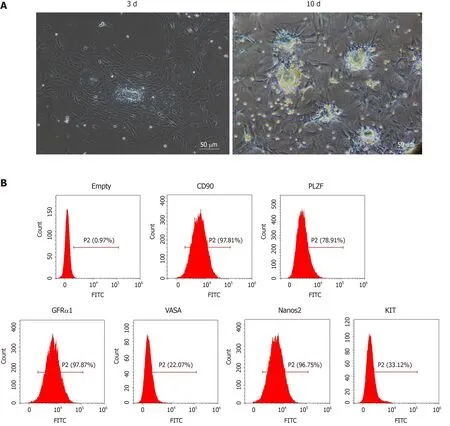
Figure1 Culture and identification of spermatogonial stem cells.
Stemness maintenance and differentiation potential are important characteristics of SSCs,and the continuous differentiation of SSCs is necessary for spermatogenesis.We showed that NP decreased the expression of markers of SSC stemness maintenance and differentiation.Stra8,which can be specifically activated by retinoic acid,is expressed in mouse embryonic ovary and adult testis,as well as before meiosis in mammalian germ cells[17,18].Male Stra8-knockout mice were sterile and had severe defects in spermatogenesis and decreased testicular volume,suggesting that Stra8 plays a vital role in spermatogenesis[19].Andersonet al[20]confirmed that Stra8 is not necessary for DNA replication in pre-filament spermatocytes but is essential for chromosome condensation and DNA homologous recombination in pre-filament spermatocytes during meiosis.Scp3 is an essential component of synaptonemal complex formation that plays an important role in male germ cell meiosis[21].Nanos3 is a homologous gene ofDrosophilaNanos that is specifically expressed in mouse germ cells.It is also an endogenous factor that initiates the process of male germ cell differentiation and plays a critical role in germ cell meiosis[22,23].In this study,NP downregulated the expression of Stra8,Nanos3 and Scp3,suggesting that NP may inhibit the differentiation and stemness maintenance of SSCs by regulating premeiotic factors.

Figure2 MTT assay of cell proliferation.
The PI3K/AKT/mTOR signaling pathway is essential for the proliferation of SSCs.The AKT/mTOR signaling pathway plays an important role in spermatogenesis by regulating the growth and transport of sperm cells in the testis and maintaining the normal function of SSCs[24,25].The mTOR signal is directly involved in the late differentiation of SSCs.Inhibition of mTOR expression can lead to the accumulation of a large number of SSCs[26,27],and the promotion of mTOR expression can promote the proliferation of SSCs[28,29].Duanet al[30]observed that NP inhibits the expression of mTOR and mediates autophagy,apoptosis and necrosis of sperm cells.Duanet al[31]also revealed that NP inhibits the activity of mTOR-p70S6K/4EBP1 signaling pathway and inhibits sperm differentiation and proliferation.Maet al[32]found that Lin28a,a conserved RNA-binding protein,is involved in SSC development,pluripotency,stemness maintenance,proliferation and self-renewal through the PI3K/AKT/mTOR pathway.Huanget al[33]observed that exposure to NP during pregnancy led to endocrine dysfunction in male offspring,inhibition of AKT/mTOR signaling and induction of apoptosis and autophagy in testicular tissue.We showed that NP significantly reduced the expression of p-PI3K,p-Akt,p-mTORC1 and p-S6K,suggesting that the effect of NP may be exerted through the PI3K/AKT/mTOR signaling pathway.
NP is produced by biodegradation of NP polyoxyethylene ether and is soluble in water.NP polyoxyethylene ether is widely used in industry and household.NP is widely found in rivers and silts in Japan,the United States,Germany and other countries.In heavily polluted rivers in the United Kingdom,the concentration of NP is as high as 534 μg/L[34-36].Similar findings have been found in some rivers in China,and the pollution of NP in China’s current water system has significantly exceeded that in foreign countries.Compared with the significant increase in the concentration of NP in water,the reproduction rate of wild animals and humans is greatly reduced[37,38].More and more families are childless,and women have been criticized for their inability to reproduce.Gender discrimination has become increasingly serious worldwide.Male oligospermia or azoospermia is also one of the important reasons for the lack of offspring,which is often overlooked.In this experiment,we confirmed that NP can not only reduce the number and activity of sperm but also affect the proliferation and differentiation of SSCs.The mechanism may be related to the PI3K/AKT/mTOR pathway.Therefore,we speculate that promoting the activity of the PI3K/AKT/mTOR pathway may help relieve male oligozoospermia caused by NP.
In conclusion,our study demonstrated that NP reduced the proliferation,differentiation and stemness maintenance of SSCs while promoting apoptosis and oxidative stress,and the mechanism may be related to the PI3K/AKT/mTOR pathway.In future studies,we will investigate whether promoting PI3K/AKT/mTOR activity has therapeutic effects on NP-induced oligospermia.
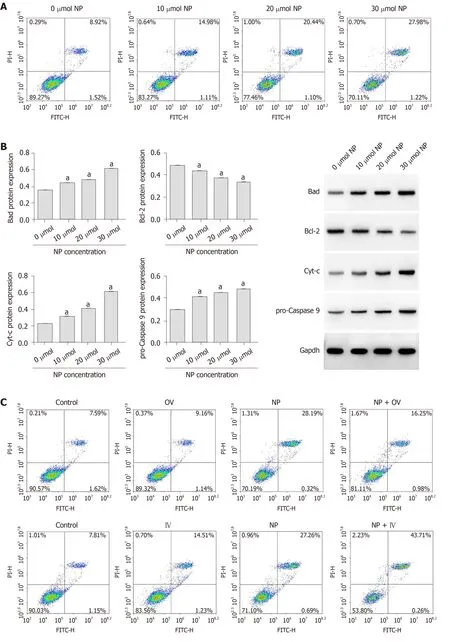

Figure3 Effect of nonylphenol on apoptosis and oxidative stress in spermatogonial stem cells.
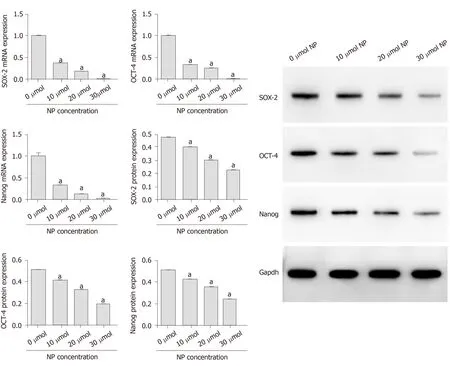
Figure4 Effect of nonylphenol on stemness maintenance of spermatogonial stem cells.
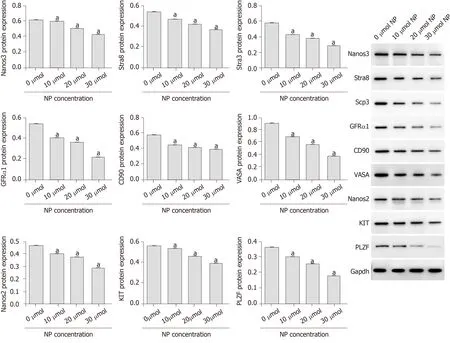
Figure5 Effect of nonylphenol on differentiation of spermatogonial stem cells.

Figure6 Effect of nonylphenol on the expression of proteins associated with phosphatidylinositol-3-kinase/protein kinase B/mammalian target of rapamycin signaling.
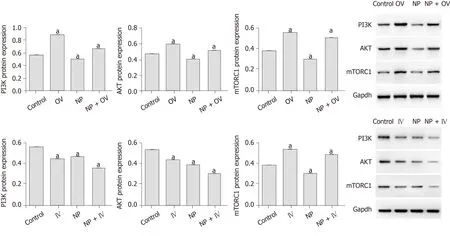
Figure7 Effects of nonylphenol on phosphatidylinositol-3-kinase/protein kinase B/mammalian target of rapamycin signaling pathway after mammalian target of rapamycin activation or inhibition.
ARTICLE HIGHLIGHTS
Research background
Infertility has become a social problem that needs to be solved urgently in the world.Apart from the infertility caused by female causes,infertility caused by male oligozoospermia has gradually been valued.Previous studies have confirmed that nonylphenol (NP) widely used in daily life can reduce male sperm counts,but the underlying mechanism is still unclear.Studying the specific mechanism of NP-induced oligospermia could provide some ideas for the treatment of NP-induced oligospermia.
Research motivation
NP has been shown to affect sperm activity,but the mechanism is currently unknown.Spermatogonial stem cells (SCCs) can eventually differentiate into sperm.We aim to study whether NP can affect the proliferation,differentiation and potential mechanism of SSCs in order to provide ideas for clinical treatment of male oligospermia caused by NP.
Research objectives
To study the effect and potential mechanism of NP on SSCs.
Research methods
SSCs were treated with NP at 0,10,20 or 30 μmol.MTT was used to detect the effect of NP on the proliferation of SSCs.Flow cytometry,reverse transcription polymerase chain reaction and western blot were used to detect the effect of NP on the proliferation,apoptosis,oxidative stress and stemness maintenance of SSCs.The effects of NP on phosphatidylinositol-3-kinase/protein kinase B/mammalian target of rapamycin (PI3K/AKT/mTOR) pathway was also measured by western blot.
Research results
Different concentrations of NP (10,20 or 30 μmol) could inhibit the proliferation of SSCs,reduce the expression of cell differentiation and stem maintenance related factors and promote apoptosis and the release of oxidative stress factors.We further examined the effect of NP on the PI3K/AKT/mTOR pathway,and the results showed that NP can significantly inhibit the activity of the PI3K/AKT/mTOR pathway.Among all NP concentrations,30 μmol had the greatest effect.
Research conclusions
NP reduced the proliferation,differentiation and stemness maintenance of SSCs while promoting apoptosis and oxidative stress,and the mechanism may be related to the PI3K/AKT/mTOR pathway,providing a potential method for the treatment of male infertility.
Research perspectives
In this study,we demonstratedin vitrothat NP could promote apoptosis and oxidative stress of SSCs and reduce the proliferation,differentiation and stem maintenance of SSCs,and the mechanism may be related to the PI3K/AKT/mTOR pathway.Therefore,we speculate that promoting the activity of the PI3K/AKT/mTOR pathway may help relieve male oligozoospermia caused by NP,and we will use PI3K/AKT/mTOR pathway agonist to verify our conjecture in the following studiesin vivo.
 World Journal of Stem Cells2020年6期
World Journal of Stem Cells2020年6期
- World Journal of Stem Cells的其它文章
- Defining lung cancer stem cells exosomal payload of miRNAs in clinical perspective
- Stem cell-based approaches:Possible route to hearing restoration?
- Recent advances of single-cell RNA sequencing technology in mesenchymal stem cell research
- Energy metabolism in cancer stem cells
- Human hair follicle-derived mesenchymal stem cells:Isolation,expansion,and differentiation
- Stem cell therapy for COVID-19 and other respiratory diseases:Global trends of clinical trials
